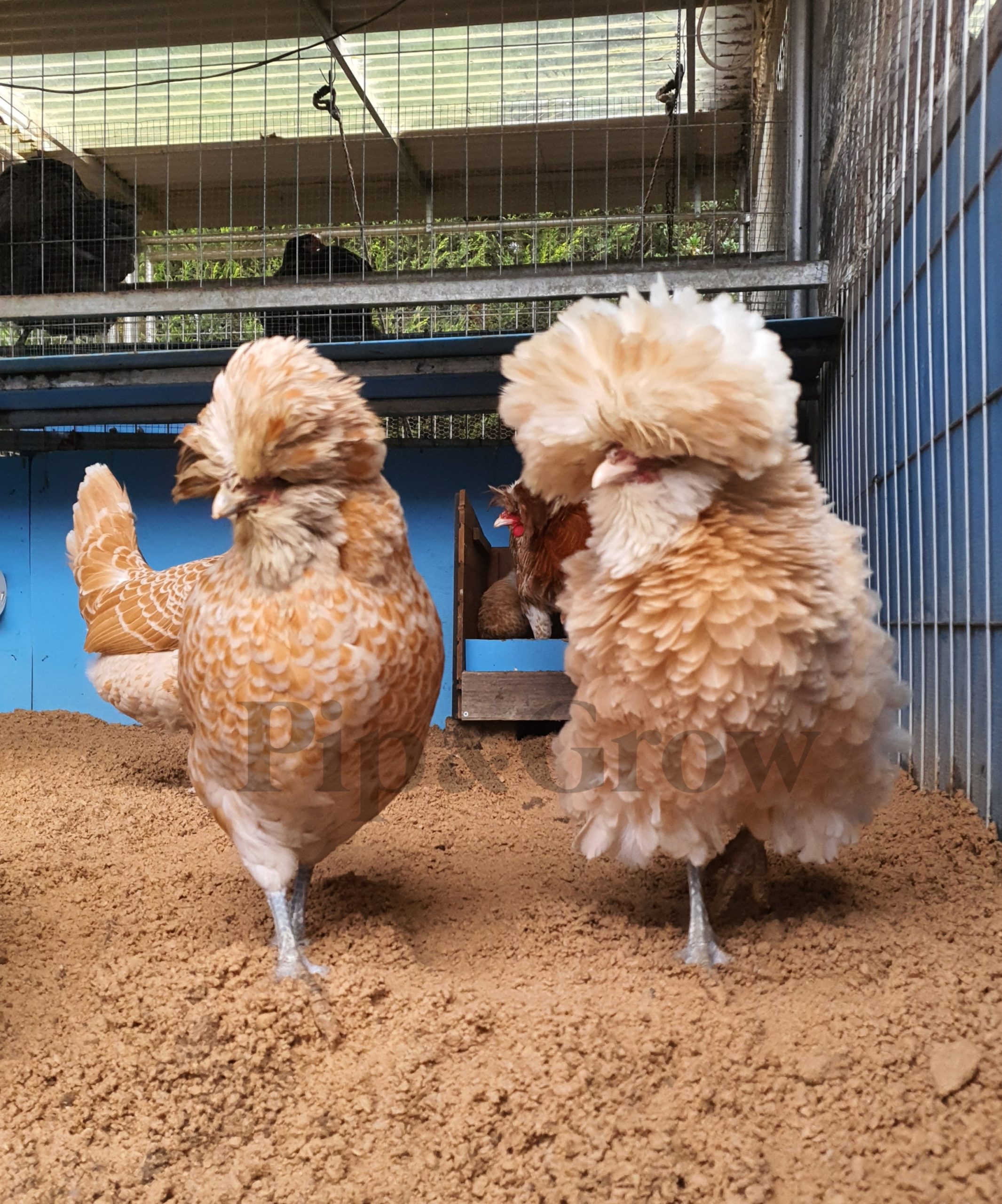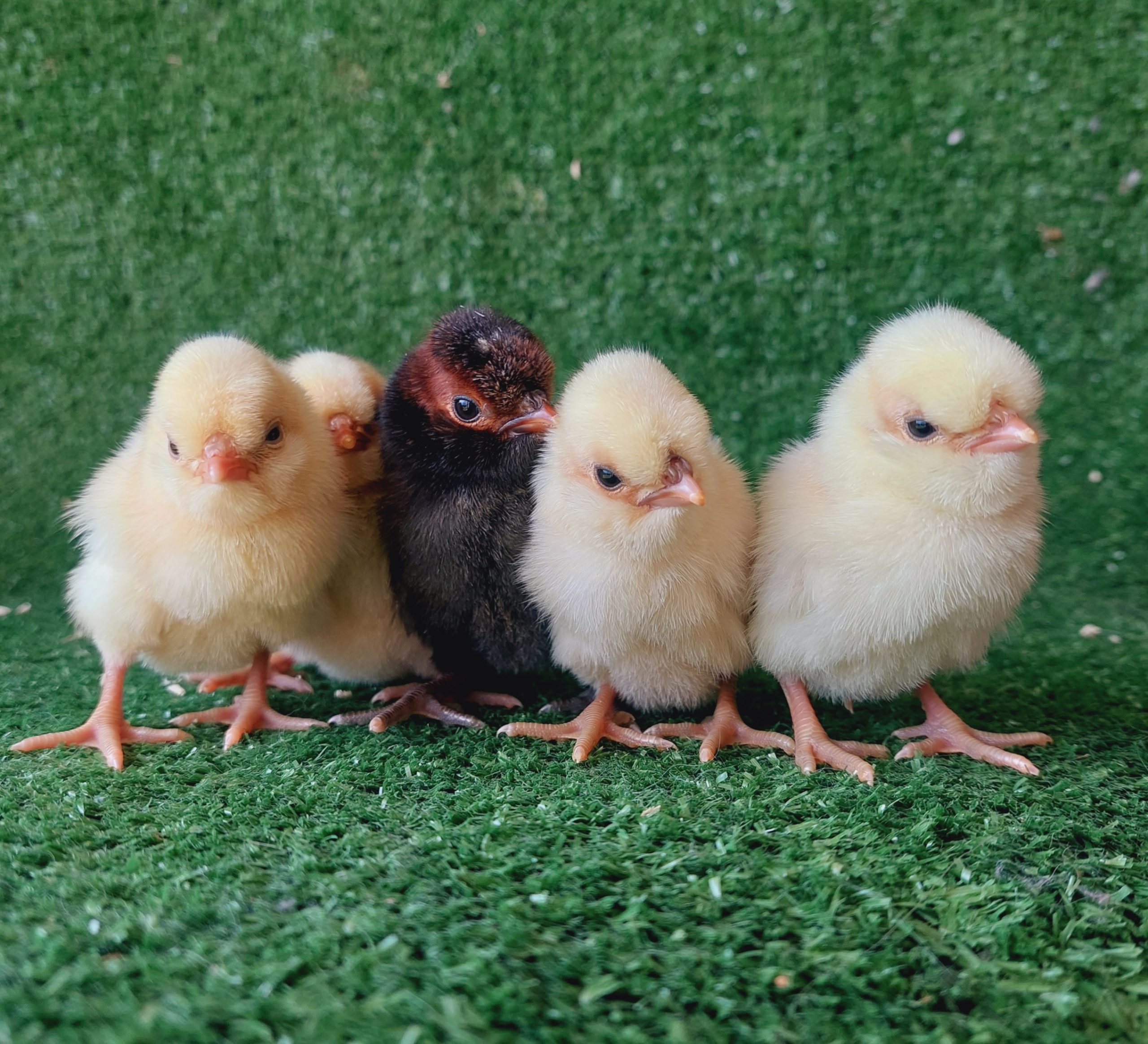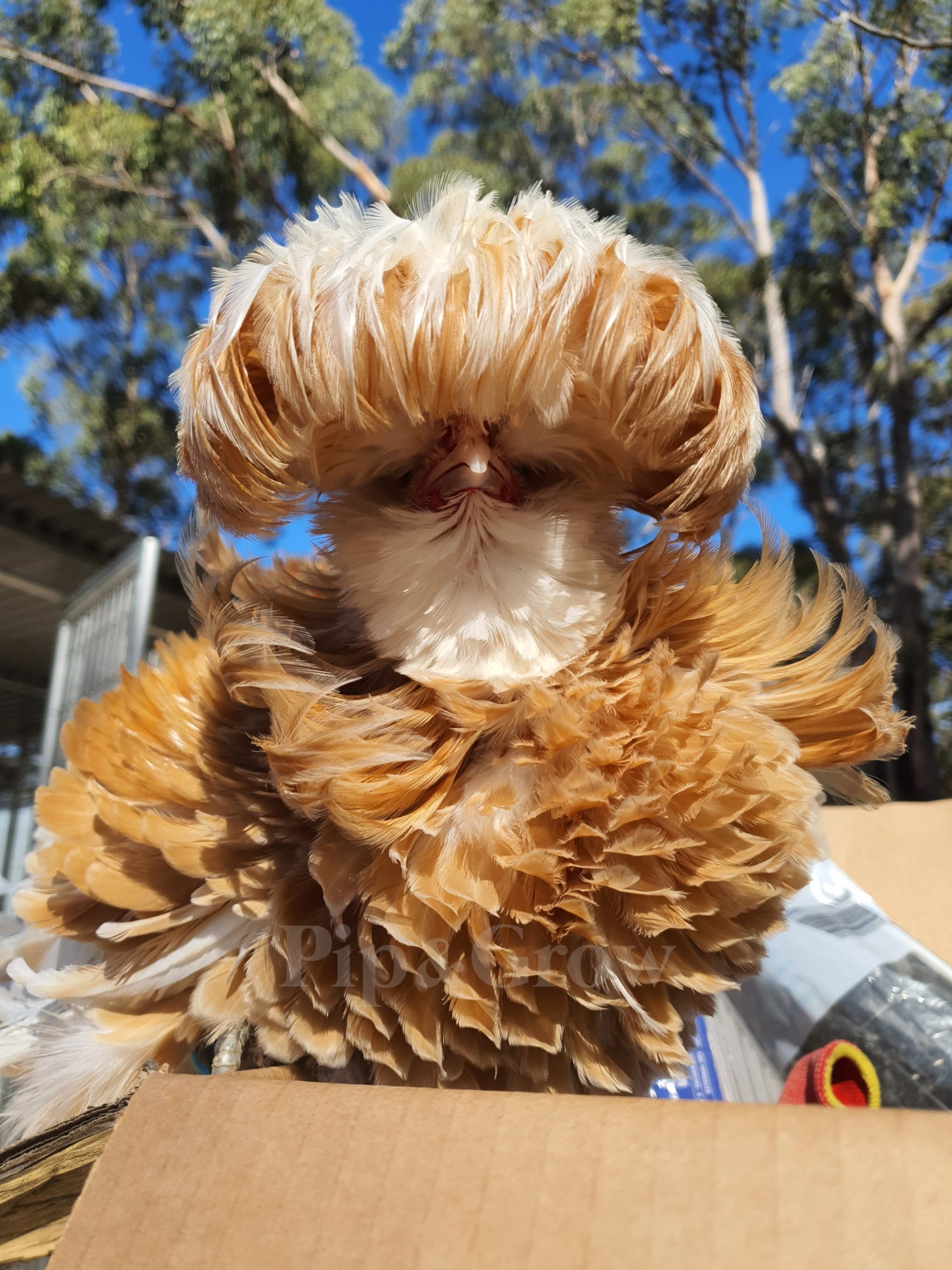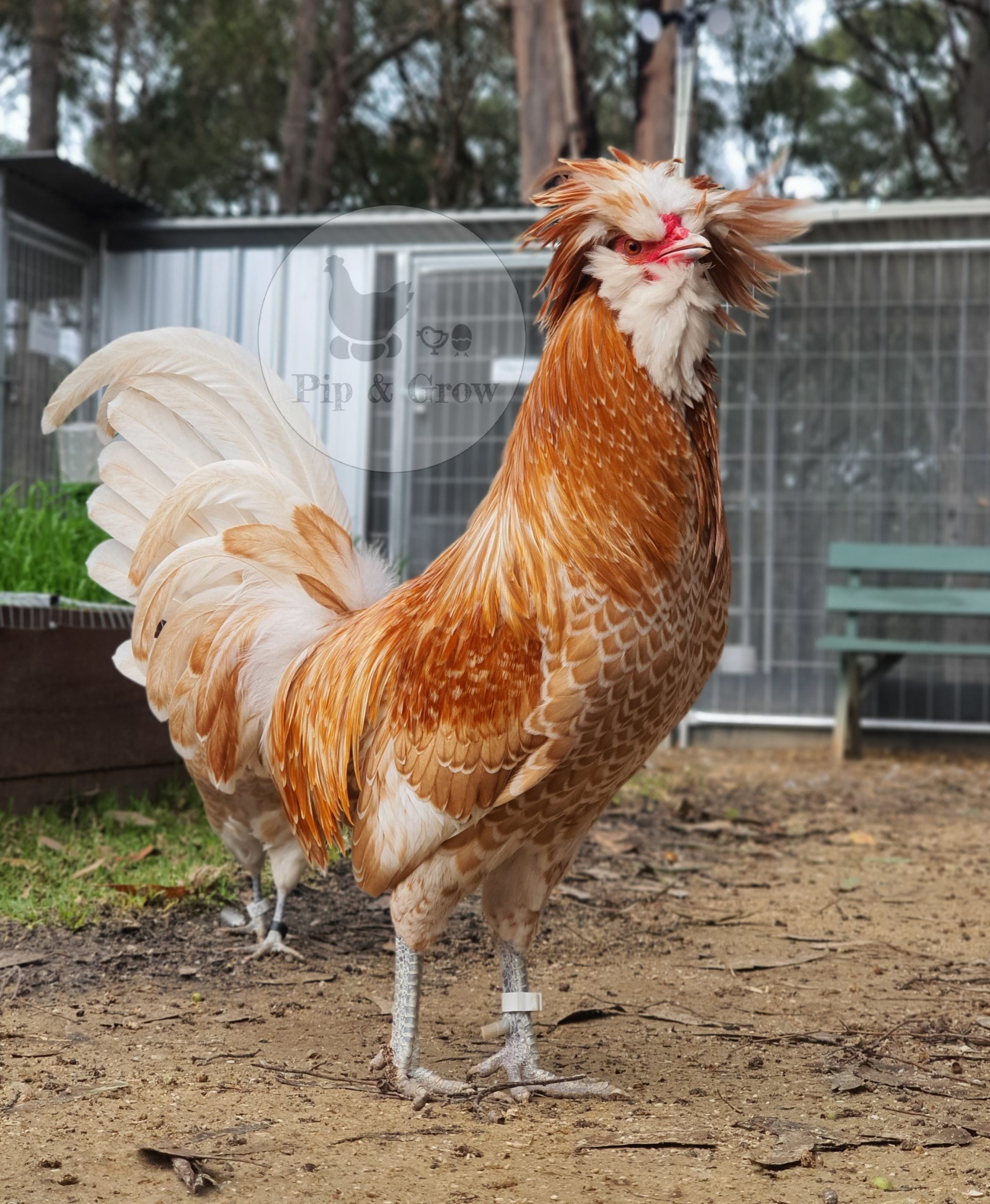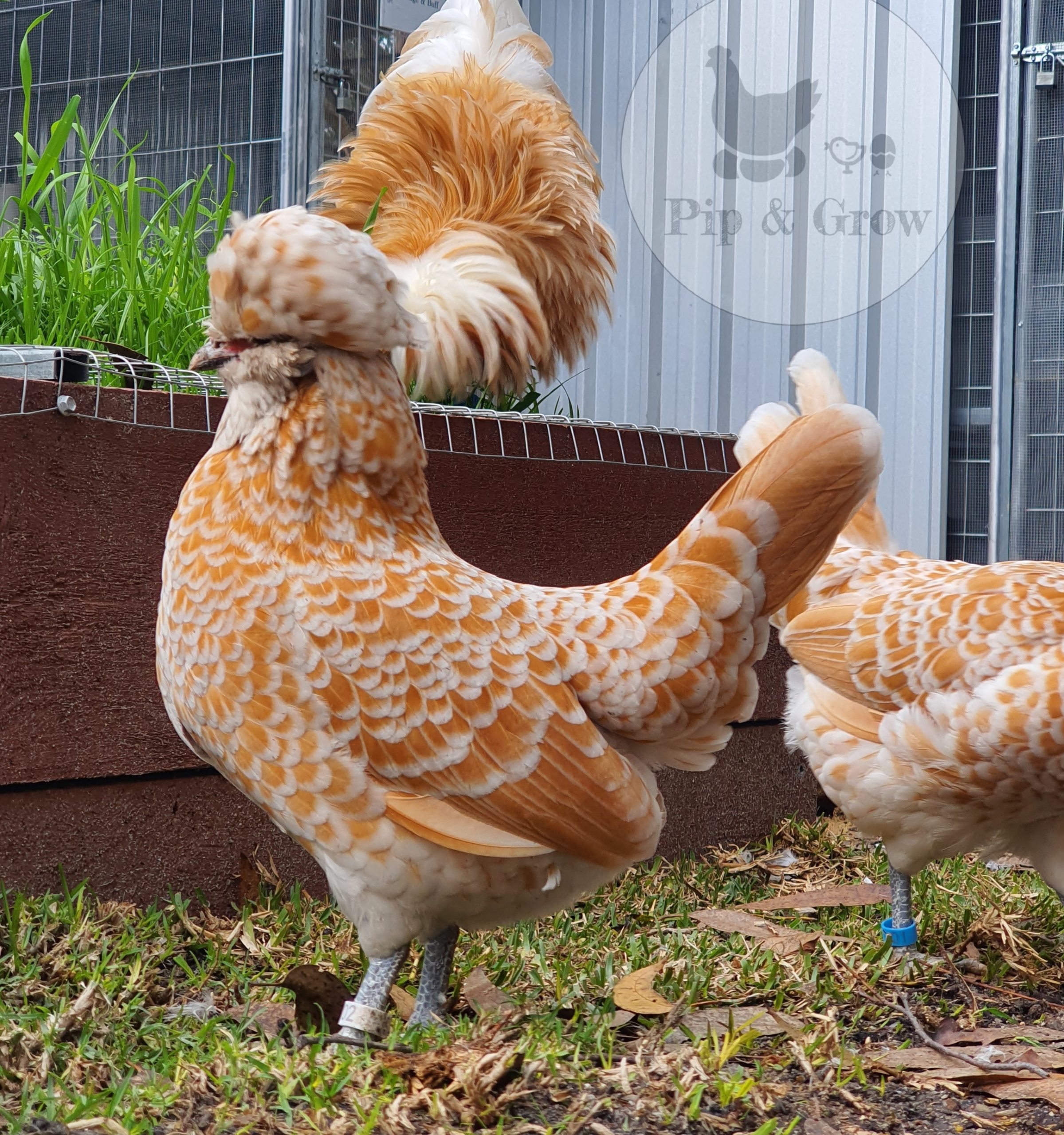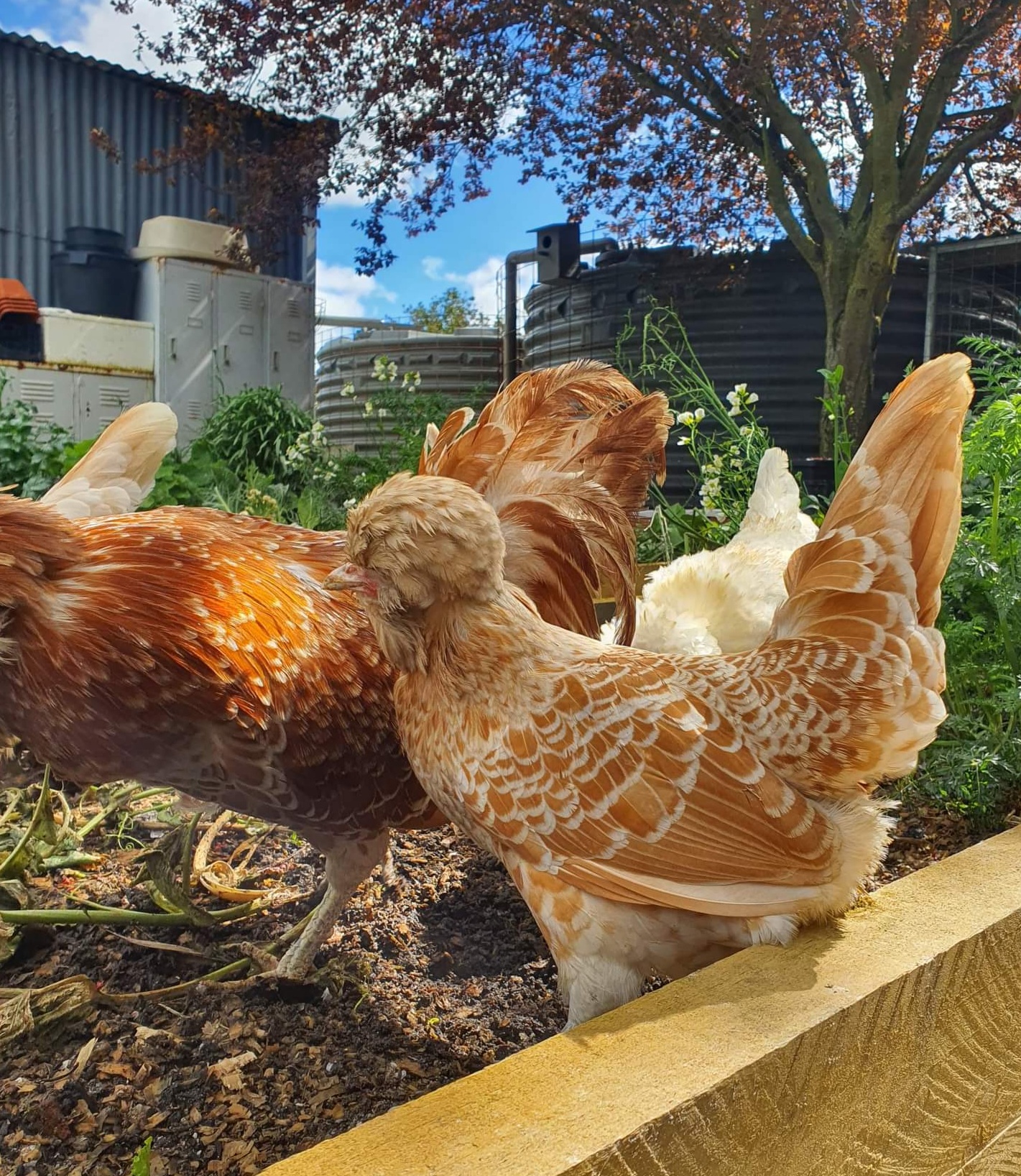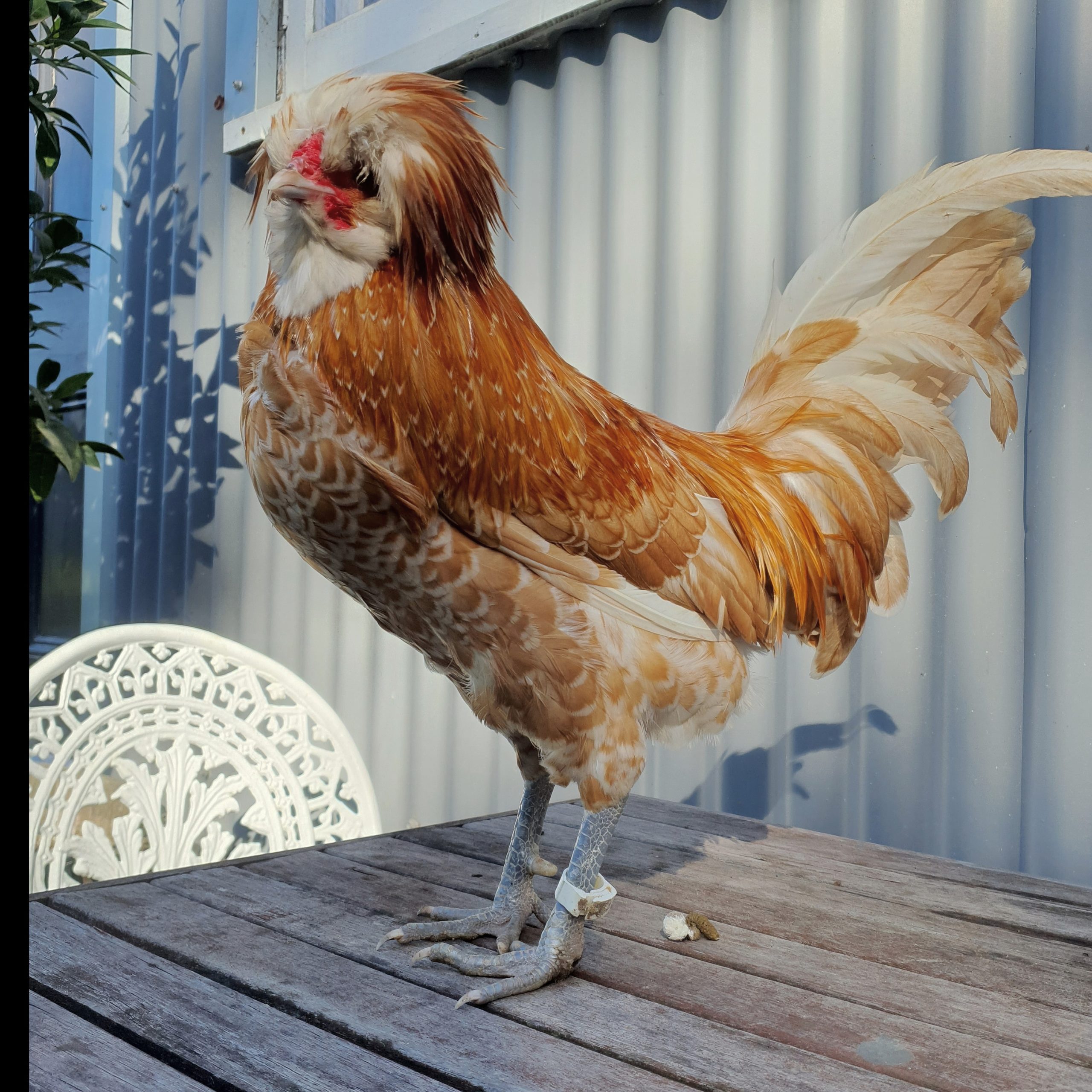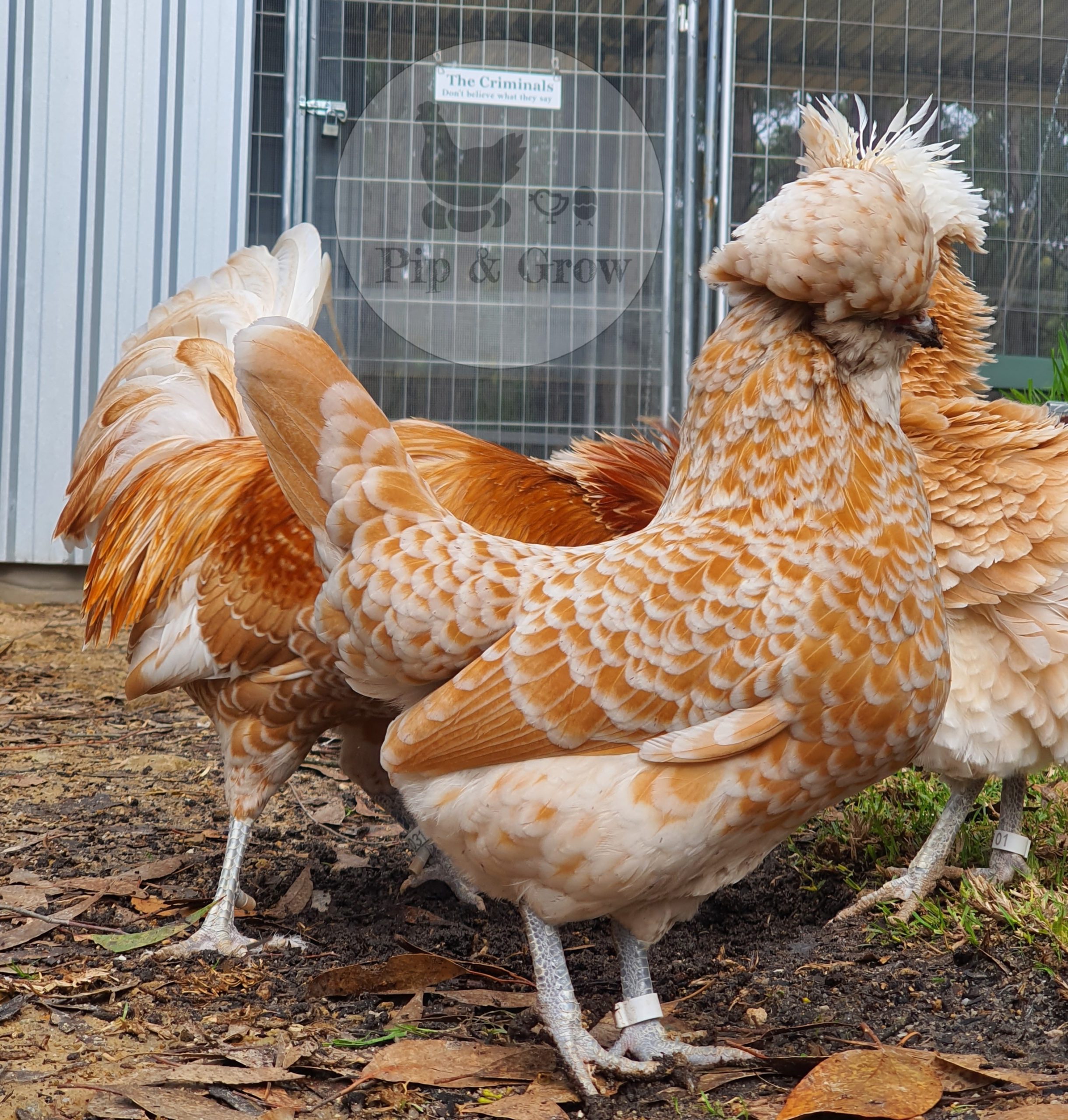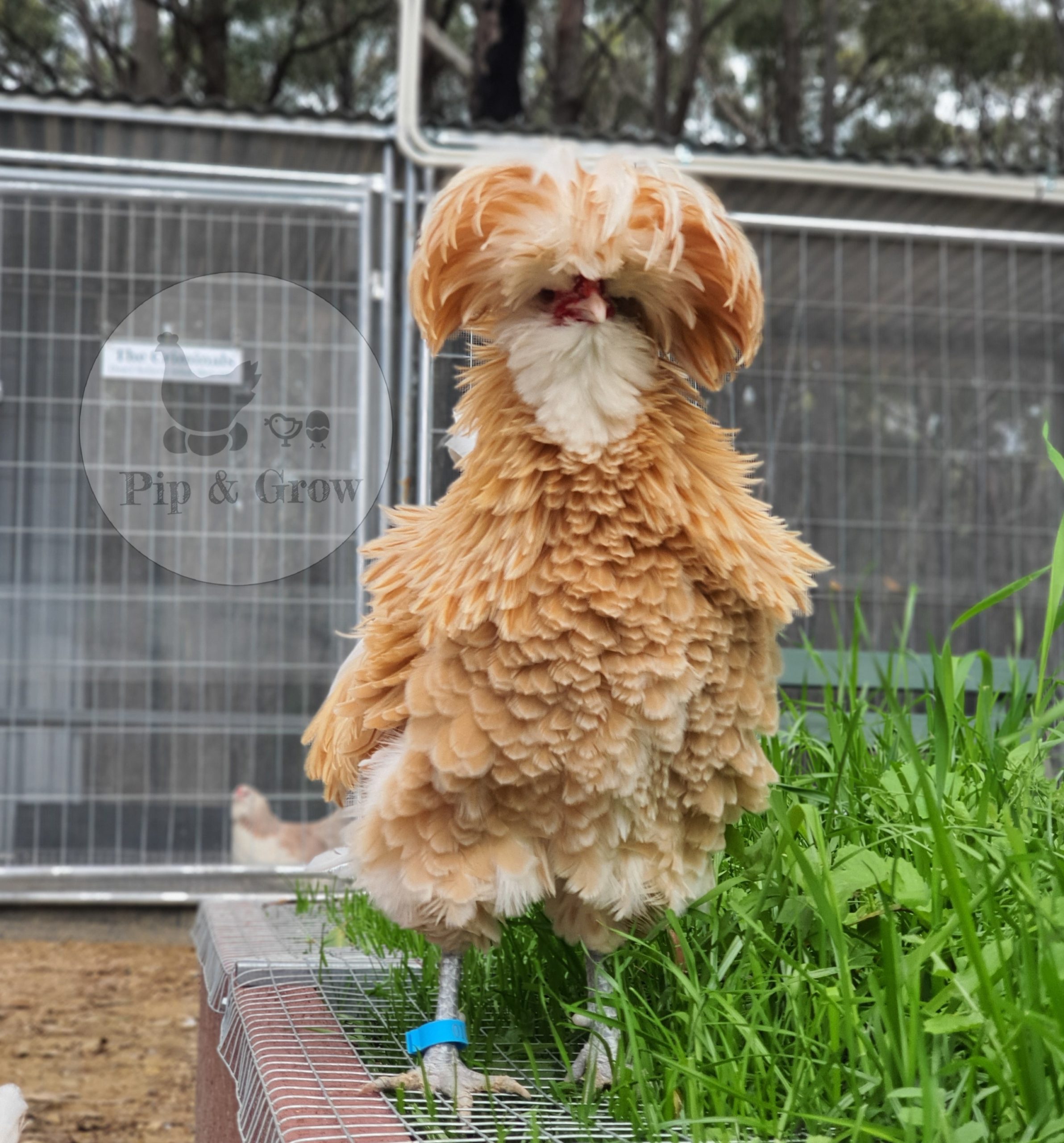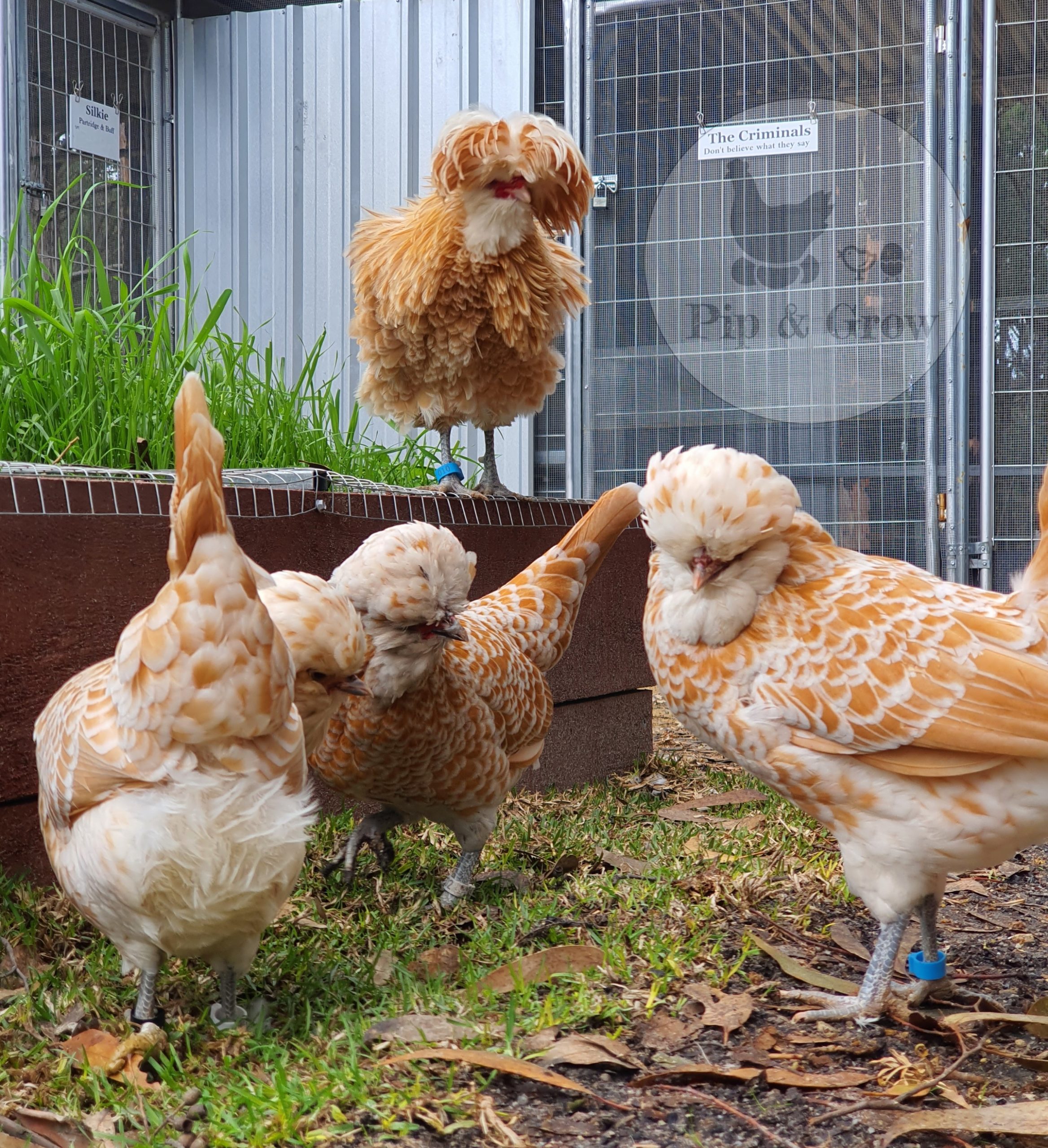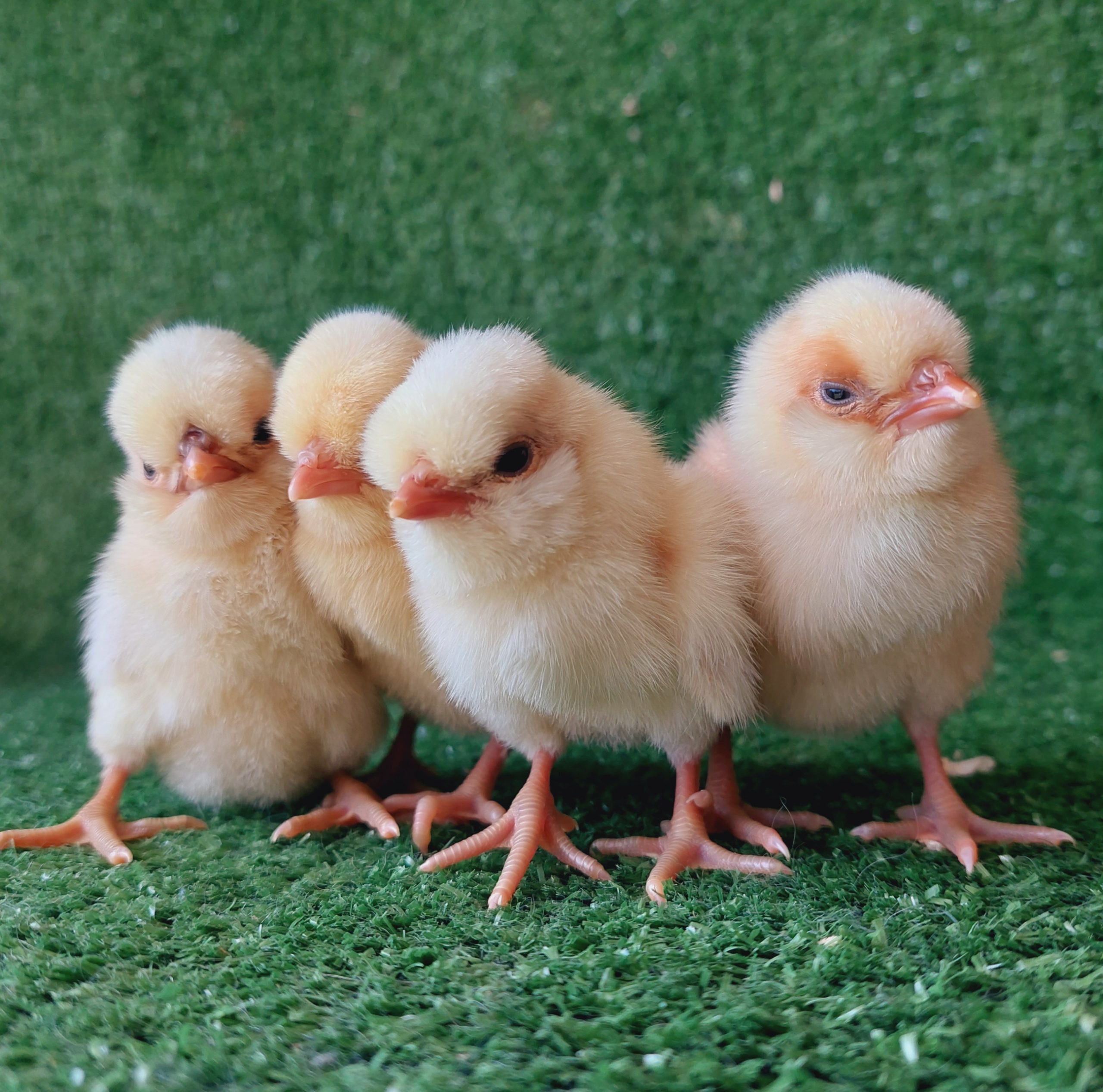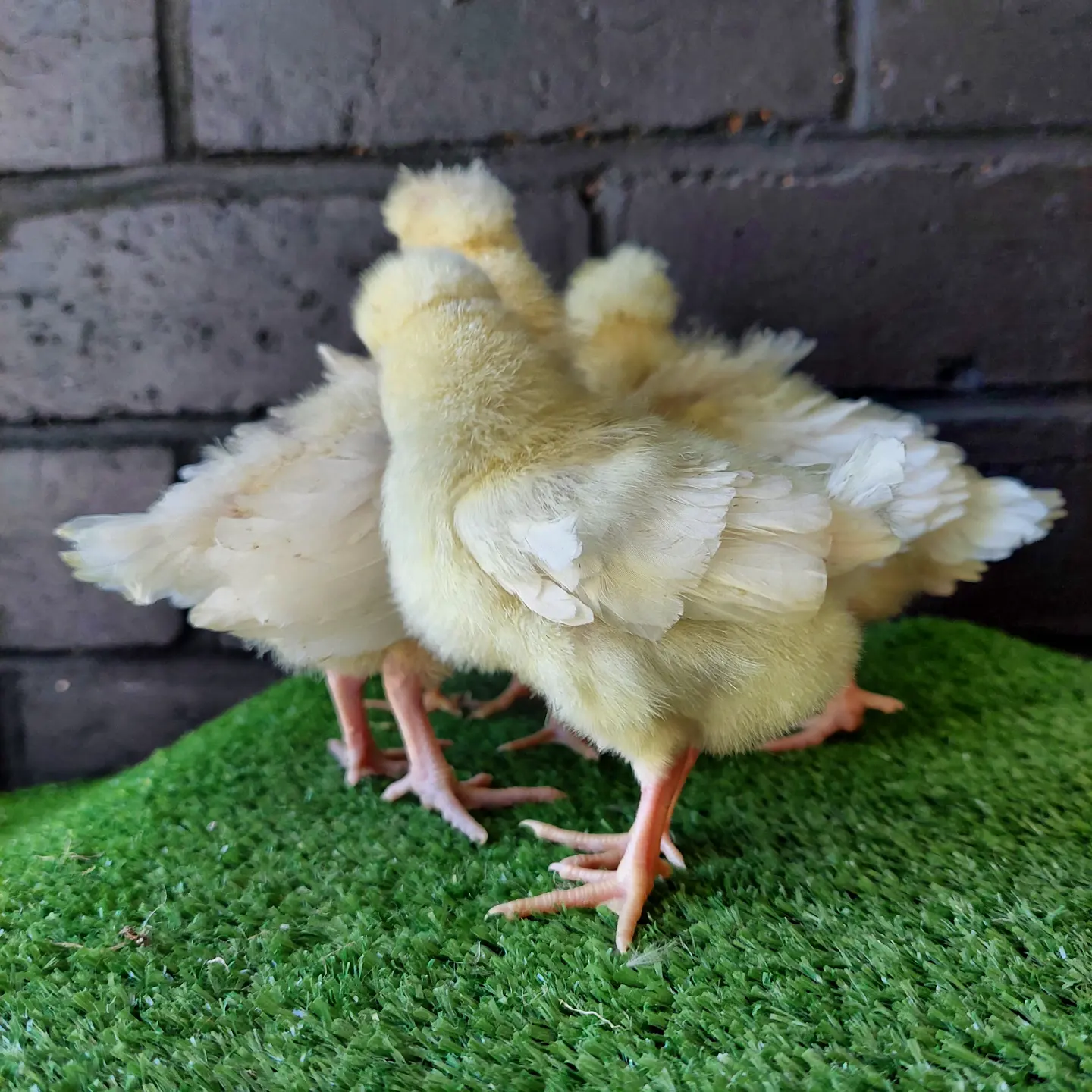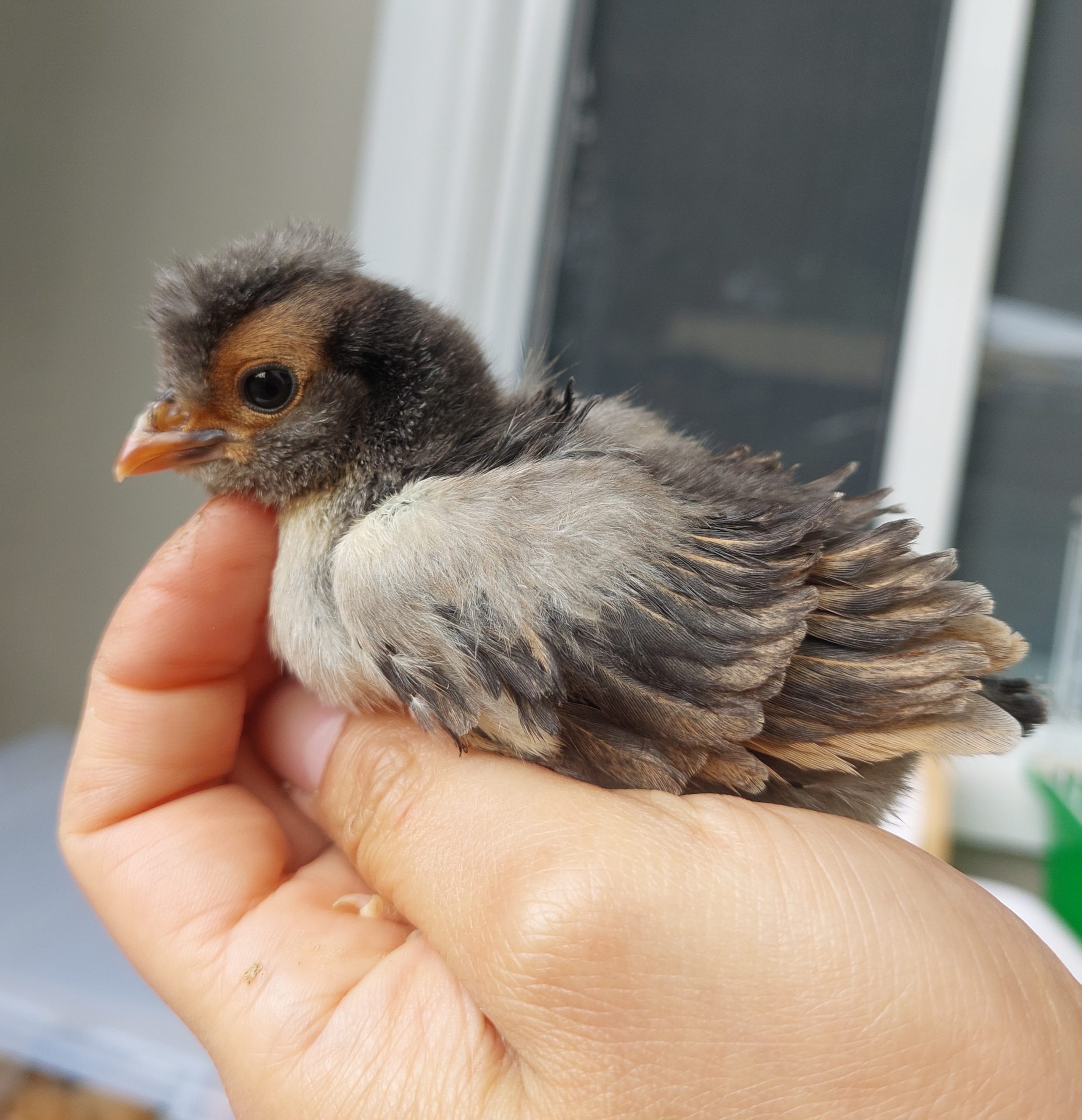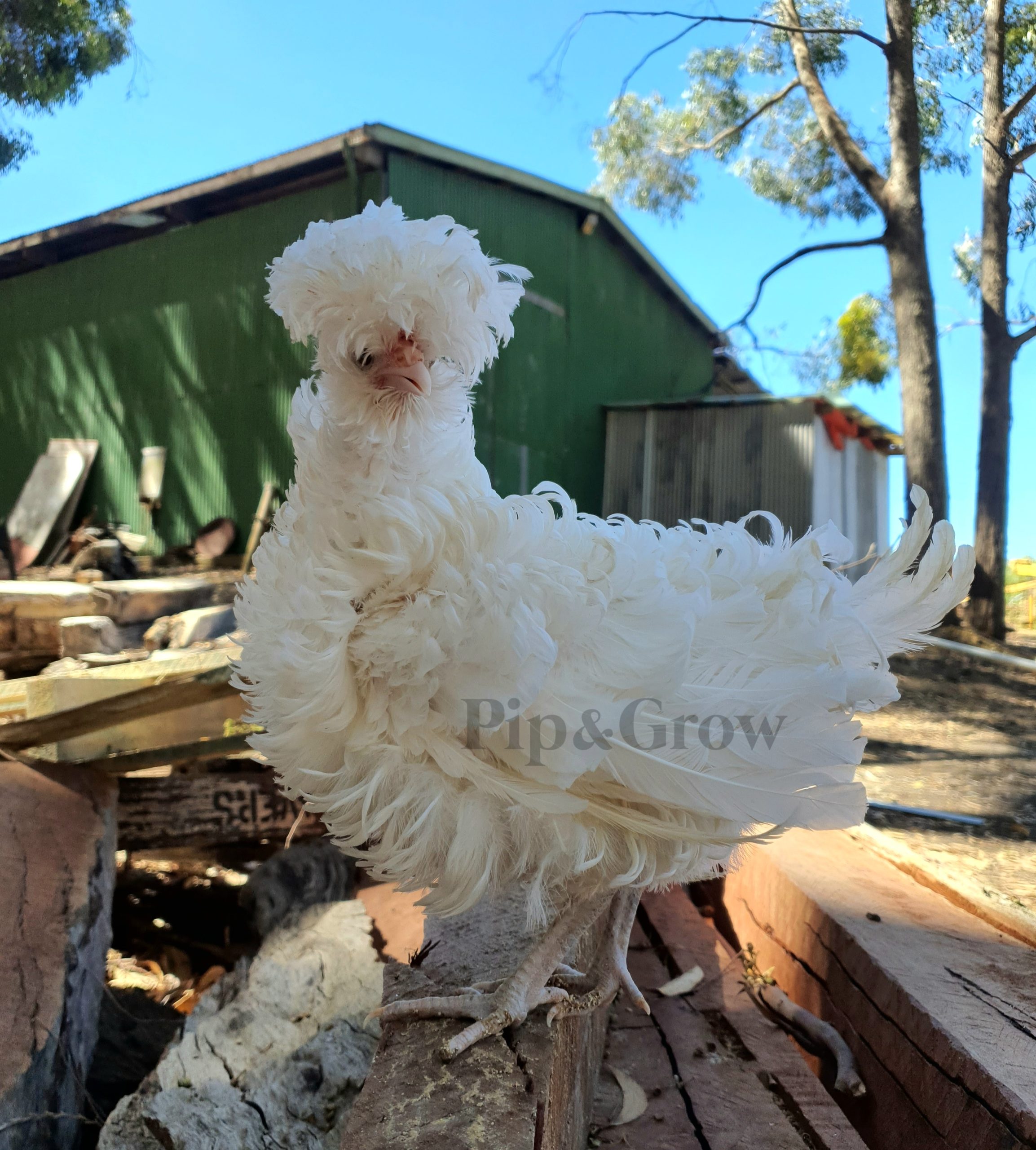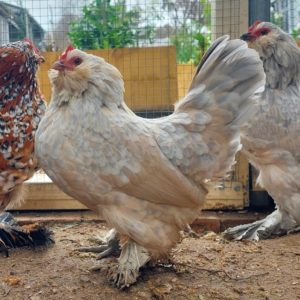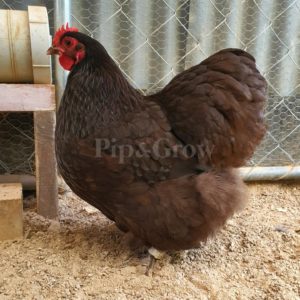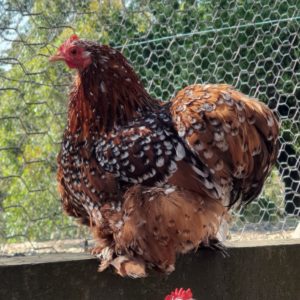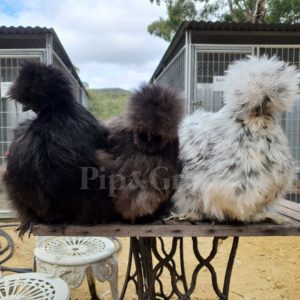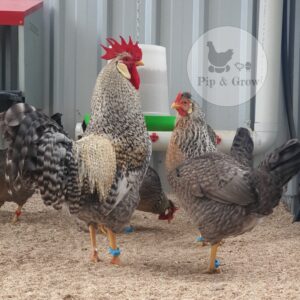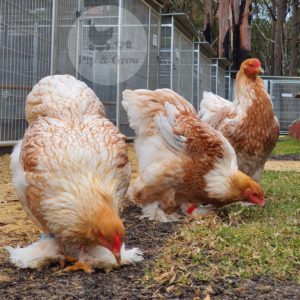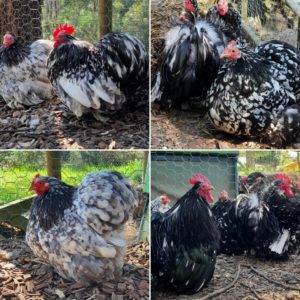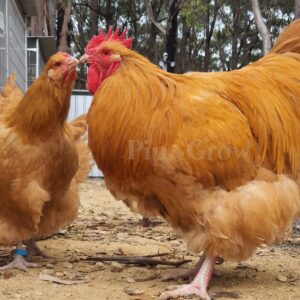Description
We avoid breeding “Frazzle”
We currently have a frizzle rooster (Stevie) who is the main breeder, along with a straight-feathered rooster (Peta) over straight-feathered hens. We avoid breeding frizzle roosters with frizzle hens, as this can result in brittle-feathered offspring known as “Frazzle,” which is not an ideal trait for the bird’s well-being.
- Originated from Europe/ Russia.
- Bantam mature weight is around 1kg
- Slow maturing – first eggs around 7- 8 months.
- Medium to large sized white eggs, expected to lay between 150-200 per year.
- Broodiness – does not go broody often
- Maintenance – low, occasional feather trim may require around eyes for better vision.
Polish is a delightful breed of chicken known for its distinctive crest of feathers on top of its head, resembling a stylish hat. Originating in the Netherlands, Polish have become popular worldwide for their unique appearance and friendly temperament. They come in two different sizes – Standard and Bantam, their plumage comes in a variety of colors, including white, black, buff, silver, and golden, each adding to their visual appeal.
Polish bantams have a compact body with a round, fluffy appearance. Their feathered crests give them a charming and somewhat comical look, though the size and shape of the crest can vary between individuals. In some cases, the crest may partially obstruct their vision, making them more vulnerable to predators. Because of this, it’s important to provide them with a safe and secure enclosure.
Polish females are known for their friendly and sociable nature, while males can be slightly protective of their hens. Overall, they are typically docile and easy to handle, making them a great choice for families with children and other pets. They are also known to be excellent layers of small to medium-sized eggs and don’t exhibit broody behavior often, making them both beautiful and practical additions to any backyard flock. Requiring minimal care, we find them to be quite hardy and adaptable to most climates. They may benefit from occasional trimming around the eyes for better vision. In mixed flocks, they tend to occupy a mid-range position in the pecking order. For optimal compatibility, it’s recommended to keep them with similar-sized breeds such as Silkies, Belgians, Bantam Orpingtons, rather than larger full-sized breeds.
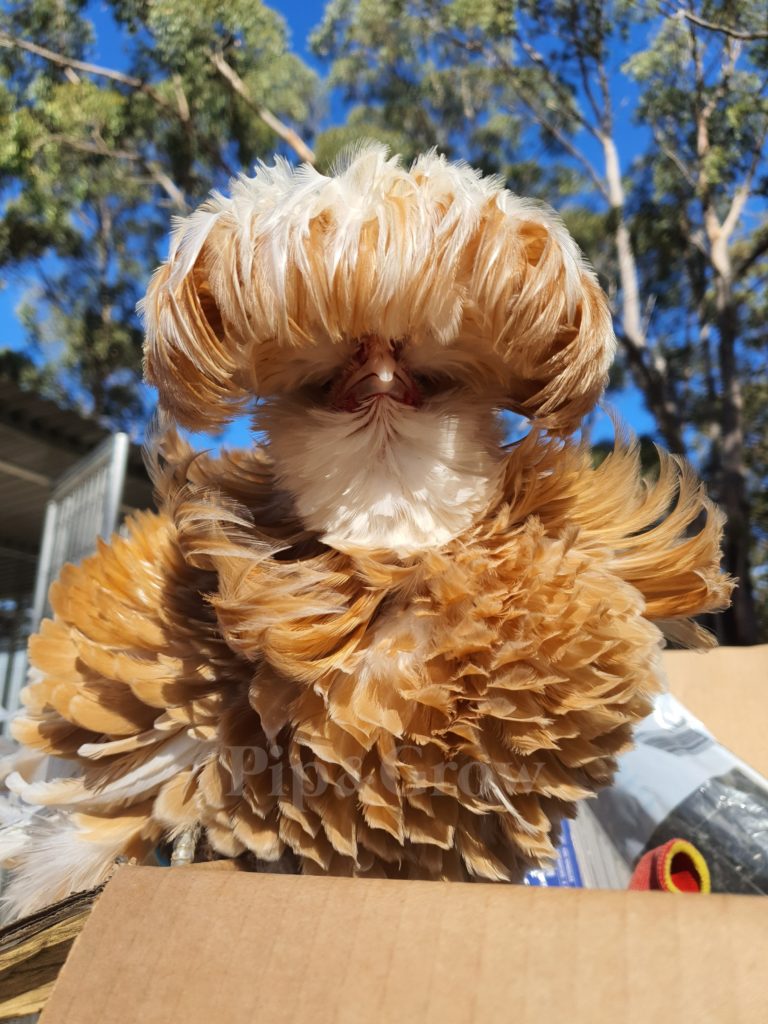
Polish is one where the Frizzled feather trait is accepted as “Pure” according to the Australian Poultry Standard. The Frizzle gene is passed down to approximately 50% of offspring, meaning that not all chicks hatched from a Frizzled hen’s egg will inherit this trait. Frizzled gene carriers can be identified around day 5 when chicks begin to develop their first feathers around the wing tips.
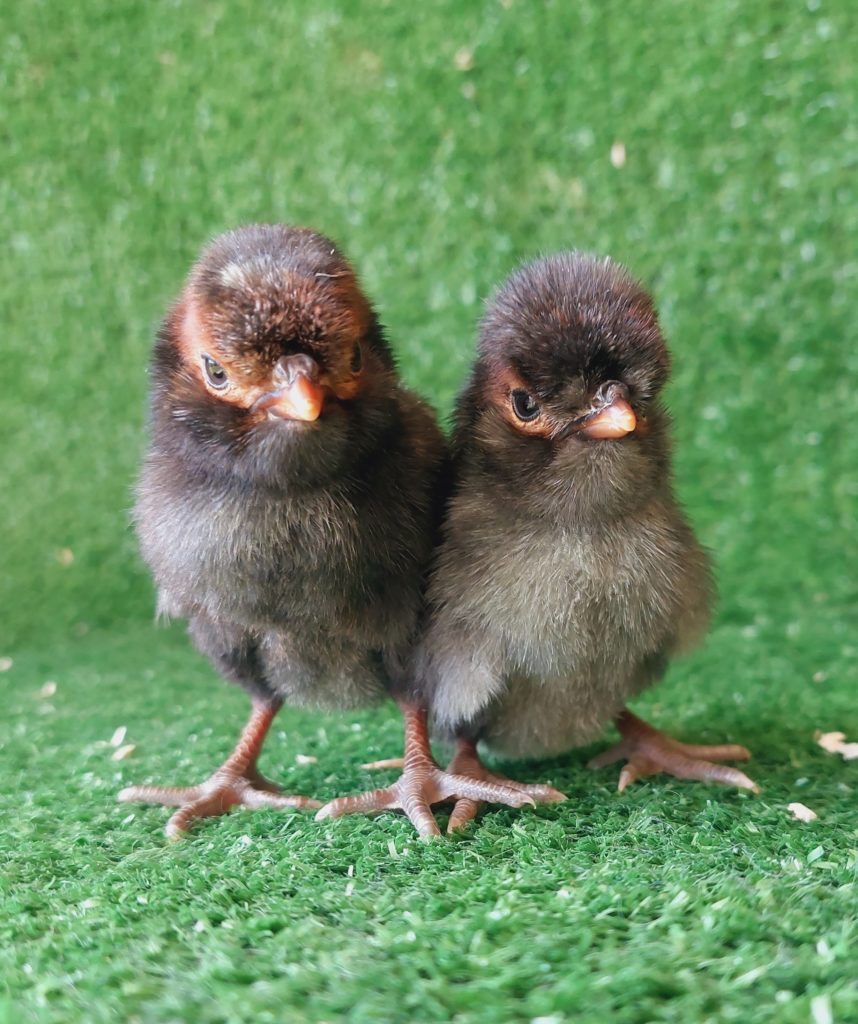
Buff Laced Bantam Polish has been one of our original breeds since the start of Pip & Grow. Over the years, we have bred many beautiful birds, and several other breeders around Australia have sourced their lines from us and continue to breed from them today.
During the 2024/25 season, we observed a weakening of the buff coloration in our offspring. To improve the lacing quality and enhance the depth of color in our Buff Laced line, we will be introducing Gold Laced variety from different bloodline. This reset is expected to strengthen the Buff Laced traits while also producing some Gold Laced offspring.
Please see Polish – Open Poultry Standard Australia for more info and breed standards.
More info found on Breeds – Polish page
Related Post – Frizzle chicken & Eggs FAQ
Polish Genetic Throwback
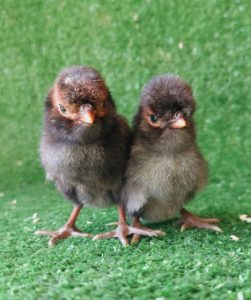
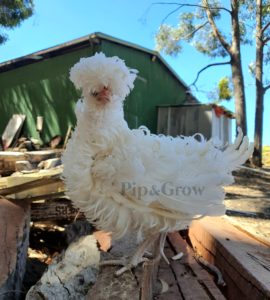
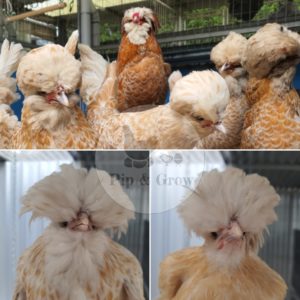
1. Our Polish breeding stock all exhibit buff lacing and beards. While the majority of offspring hatch with buff lacing, there is a slight possibility of Gold laced and White offspring hatching. Read more “What is Genetic Throwback?”
2. The beard trait is an autosomal incomplete dominant characteristic. This means it is typically dominant, though not always expressed. Even when both parents possess full beards, there remains a possibility of non-bearded offspring. The expression of this trait is not consistent, and variations may arise in subsequent generations. Hence, while most offspring will exhibit a beard, there is a chance that some may not inherit this trait.
